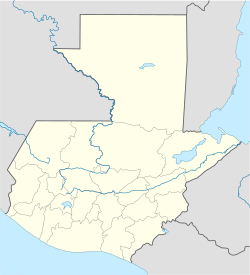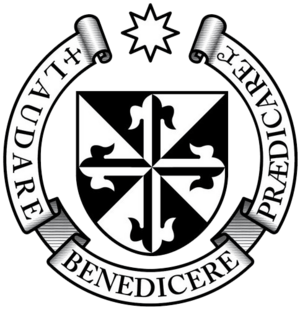San Juan Sacatepéquez facts for kids
Quick facts for kids
San Juan Sacatepéquez
|
|
|---|---|
|
Municipality
|
|
| Country | |
| Department | Guatemala |
| Area | |
| • Municipality | 113 sq mi (292 km2) |
| Population
(2018 census)
|
|
| • Municipality | 218,156 |
| • Density | 1,935/sq mi (747.1/km2) |
| • Urban | 155,965 |
| Climate | Cwb |
San Juan Sacatepéquez (pronounced sahn hwahn sah-kah-teh-PEH-kes) is a city in Guatemala. It is also a municipality, which is like a local government area. The city is located in the Guatemala department, which is a region in the country. It is found northwest of Guatemala City, the capital.
In 2018, about 155,965 people lived in San Juan Sacatepéquez. This makes it the eighth largest city in Guatemala. The city is well-known for growing beautiful flowers. It is also famous for making wooden furniture.
Contents
History of San Juan Sacatepéquez
How Towns Were Formed in the Past
After the Spanish arrived in the Americas, they wanted to teach the native people about the Catholic faith. They set up special settlements called "Indian doctrines." These places were meant to teach the native people the Spanish language and Catholicism.
The original idea was for religious leaders, called friars, to teach the faith. Then, these settlements would become regular towns, just like those in Spain. People in these towns would then pay taxes to the church.
However, this plan did not quite work out. The friars had special permission to convert the natives. This meant they only answered to their own religious leaders. They did not have to follow the Spanish government or local bishops. Once a "doctrine" was set up, it became a self-governing town. These towns stayed mostly the same throughout the Spanish colonial period.
Life in the Doctrines
Friars decided where to build these doctrines. They were free to set up communities as long as the main goal was to teach the faith. But these doctrines grew very large and were never handed over to regular church control. They grew around a main religious building, called a monastery. From there, friars would visit smaller nearby settlements. These smaller places were called "annexes" or "visit towns."
Doctrines had three main features:
- They were independent from outside control, both from the church and the government.
- A group of friars ran them.
- They usually had many smaller towns connected to them.
Having a group of friars in charge was important. It made sure that the community could keep running smoothly, even if one friar passed away.
In 1638, a group of friars called the Order of Preachers reorganized their large doctrines. This helped them manage their resources better. The San Juan Sacatepéquez doctrine became part of the area managed by the Santiago de los Caballeros de Guatemala monastery.
In 1754, the Order of Preachers had to give up control of all their doctrines. This change was part of a bigger plan by the Spanish King Carlos III. He wanted to give more power to the regular church leaders, not just the religious orders.
Climate and Weather
San Juan Sacatepéquez has a mild climate. It is often described as a temperate climate. This means it usually has pleasant temperatures, not too hot or too cold.
| Climate data for San Juan Sacatepéquez | |||||||||||||
|---|---|---|---|---|---|---|---|---|---|---|---|---|---|
| Month | Jan | Feb | Mar | Apr | May | Jun | Jul | Aug | Sep | Oct | Nov | Dec | Year |
| Mean daily maximum °C (°F) | 21.5 (70.7) |
22.6 (72.7) |
23.9 (75.0) |
24.4 (75.9) |
24.0 (75.2) |
22.5 (72.5) |
22.6 (72.7) |
23.0 (73.4) |
22.3 (72.1) |
21.5 (70.7) |
21.6 (70.9) |
21.6 (70.9) |
22.6 (72.7) |
| Daily mean °C (°F) | 15.6 (60.1) |
16.4 (61.5) |
17.3 (63.1) |
18.3 (64.9) |
18.4 (65.1) |
18.0 (64.4) |
17.9 (64.2) |
18.0 (64.4) |
17.6 (63.7) |
16.9 (62.4) |
16.4 (61.5) |
15.8 (60.4) |
17.2 (63.0) |
| Mean daily minimum °C (°F) | 9.8 (49.6) |
10.2 (50.4) |
10.8 (51.4) |
12.3 (54.1) |
12.9 (55.2) |
13.6 (56.5) |
13.2 (55.8) |
13.0 (55.4) |
12.9 (55.2) |
12.4 (54.3) |
11.3 (52.3) |
10.1 (50.2) |
11.9 (53.4) |
| Average precipitation mm (inches) | 6 (0.2) |
4 (0.2) |
3 (0.1) |
37 (1.5) |
111 (4.4) |
250 (9.8) |
201 (7.9) |
201 (7.9) |
248 (9.8) |
122 (4.8) |
29 (1.1) |
6 (0.2) |
1,218 (47.9) |
| Source: Climate-Data.org | |||||||||||||
Where San Juan Sacatepéquez Is Located
San Juan Sacatepéquez is in a specific part of Guatemala. It shares borders with several other municipalities and departments.
 |
Granados, municipality of Baja Verapaz Department |  |
||
| San Martín Jilotepeque, municipality of Chimaltenango Department | San Raymundo and San Pedro Sacatepéquez, municipality of Guatemala Department | |||
| Santo Domingo Xenacoj, municipality of Sacatepéquez Department | San Pedro Sacatepéquez, municipality of Guatemala Department |
Images for kids
See also
 In Spanish: San Juan Sacatepéquez para niños
In Spanish: San Juan Sacatepéquez para niños




